Week_9_Online_Lab_Air_Track_Gizmo
Document Content and Description Below
Week 9 Online Lab: Air Track Gizmo Explore Learning Gizmo: Air Track Physics For this assignment, you'll use a Gizmo at the Explore Learning web site. Before you begin: • You may want to... print this document so that you can note observations as you work with the gizmo. Later, you can type your answers into the Word document and upload it with this assignment form. • All questions to answer are contained in this document. You don’t need to answer any questions at the Explore Learning site. • This lab has a Prior Knowledge piece, a Warm-Up piece, and Activity A and B. • You must answer in a different colored font (-1 point) FINDING THE GIZMO Follow these steps to find the Gizmo: • Go to the Explore Learning website: http://www.explorelearning.com/. • If you have not yet enrolled in the class -- In the upper right hand corner, click on Enroll in a Class. • The class code you need is 6FZRUV6SEM (note - these are all capital letters). • Click on Continue. • If you have used the Explore Learning site before you should be able to log in using your MNOHS username and password (for example, mnohs10ajones / piano227). If you have never used Explore Learning before, you’ll need to register using your MNOHS username and password with the class code. In other words, the class code is only needed once! • Once inside the Physics course, look for the Gizmo called Air Track and click on Launch Gizmo. Answer all questions below in this Word document. When you are ready, upload the document to your assignment file. Vocabulary: air track, approach velocity, conservation of energy, conservation of momentum, elasticity, kinetic energy, momentum, separation velocity, velocity Prior Knowledge Questions (Do these BEFORE using the Gizmo.) Imagine going to a bowling alley with a bowling ball and a ping pong ball. 1. Why is a bowling ball better for knocking down pins than a ping pong ball? 2. Which do you think would knock down more pins, a bowling ball moving 10 meters per second or a bowling ball moving 10 centimeters per second? 3. What two factors seem to most affect the amount of damage that occurs in a collision? Gizmo Warm-up An air track is a device that helps scientists study motion. Air comes out of holes in the track, allowing the gliders to move with minimal friction. 1. On the Air Track Gizmo, click Play ( ) to view a collision between the two gliders. What do you see?. 2. Click Reset ( ). The velocity (v) of an object describes its speed and direction. The velocity each glider is indicated next to the v1 and v2 sliders. Click Play, and then click Pause ( ) just before the collision. A. What is the velocity of Glider 1? B. In which direction does Glider 1 move? C. What is the velocity of Glider 2? - D. In which direction does Glider 2 move? Question: How does an object’s momentum change when it collides with another object? 1. Explore: The Gizmo allows you to adjust the mass and initial velocity of each glider. Set up each of the following scenarios, and describe what happens when the gliders collide. A. The gliders have the same mass but different velocities. B. The gliders have the same mass and one glider is stationary. C. The gliders have the same velocity (but in opposite directions) and different masses. 2. Calculate: An object’s momentum (p) describes how hard it is to stop. Momentum is equal to the product of mass and velocity: p = mv. If mass is measured in kilograms and velocity in meters per second, the unit of momentum is kilograms-meters per second, or kg•m/s. A. What is the momentum if the mass is 1.5 kg and the velocity is 4 m/s? Turn on Show numerical data and use the Gizmo to check your answer. B. How could you use the Gizmo to increase a glider’s momentum? 3. Gather data: Click Reset. Set m1 to 3.0 kg and v1 to 2.0 m/s. Set m2 to 2.0 kg and v2 to -4.0 m/s. Fill in the left table, run the collision, and then fill in the right table. Before collision Glider Glider 1 Glider 2 Mass 3.0 kg 2.0 kg Velocity 2.0 m/s -4.0 m/s Momentum After collision Glider Glider 1 Glider 2 Mass Velocity Momentu m (Activity A continued on next page) Activity A (continued from previous page) 4. Calculate: To find the total momentum, add up the momentum of each glider. (Note: Pay attention to signs.) A. What was the total momentum of the two gliders before the collision? - B. What was the total momentum of the two gliders after the collision? - Turn on Show total momentum to check your answers. 5. Experiment: Click Reset. Set up three collisions using any combination of masses and velocities you like. (The only rule is that the gliders must collide.) Record the mass, velocity, and momentum of each glider before and after the collision. Then, find the total momentum. Remember to include units. ..........................................................................CONTINUED........................................................................... [Show More]
Last updated: 2 years ago
Preview 1 out of 9 pages
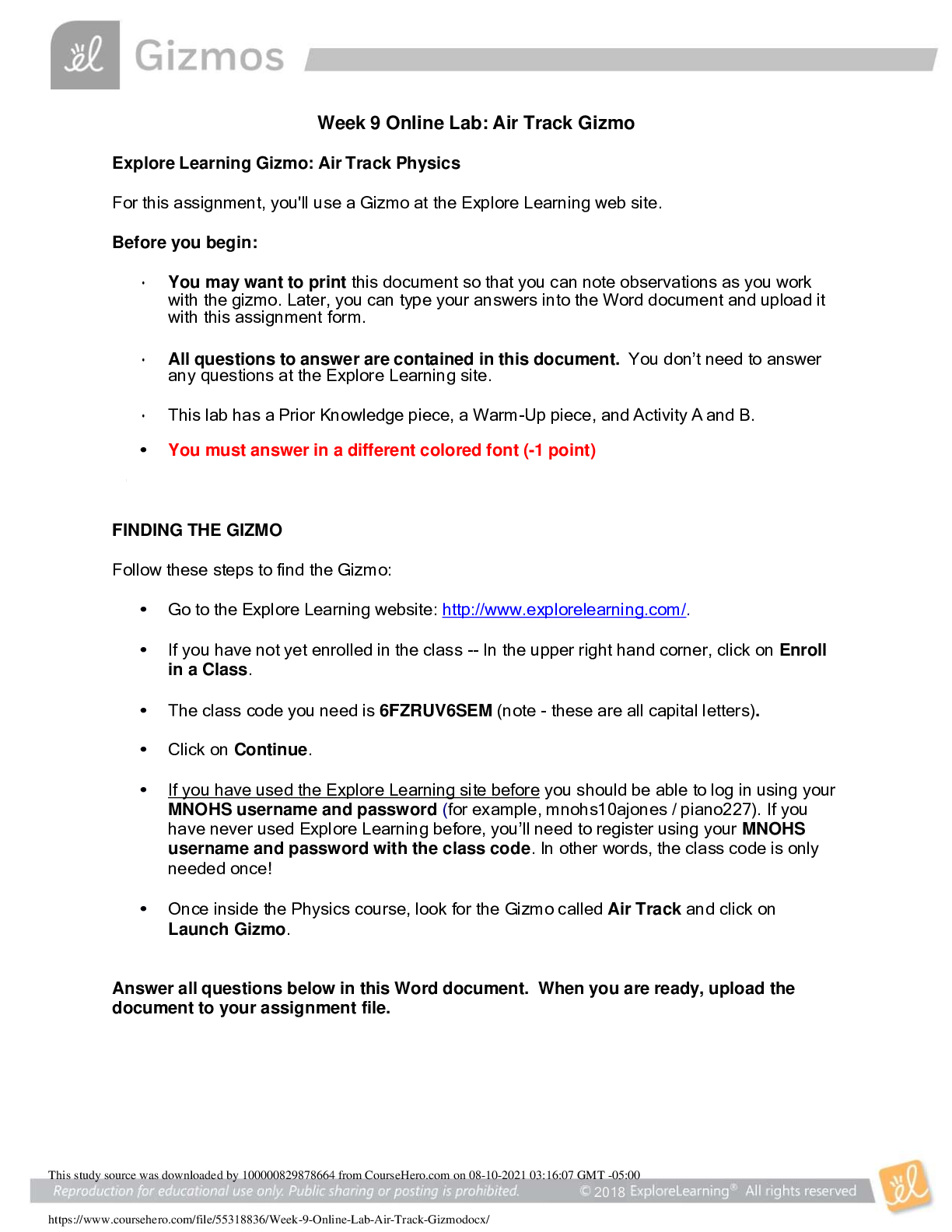
Buy this document to get the full access instantly
Instant Download Access after purchase
Buy NowInstant download
We Accept:

Reviews( 0 )
$7.00
Can't find what you want? Try our AI powered Search
Document information
Connected school, study & course
About the document
Uploaded On
Aug 10, 2021
Number of pages
9
Written in
Additional information
This document has been written for:
Uploaded
Aug 10, 2021
Downloads
0
Views
101

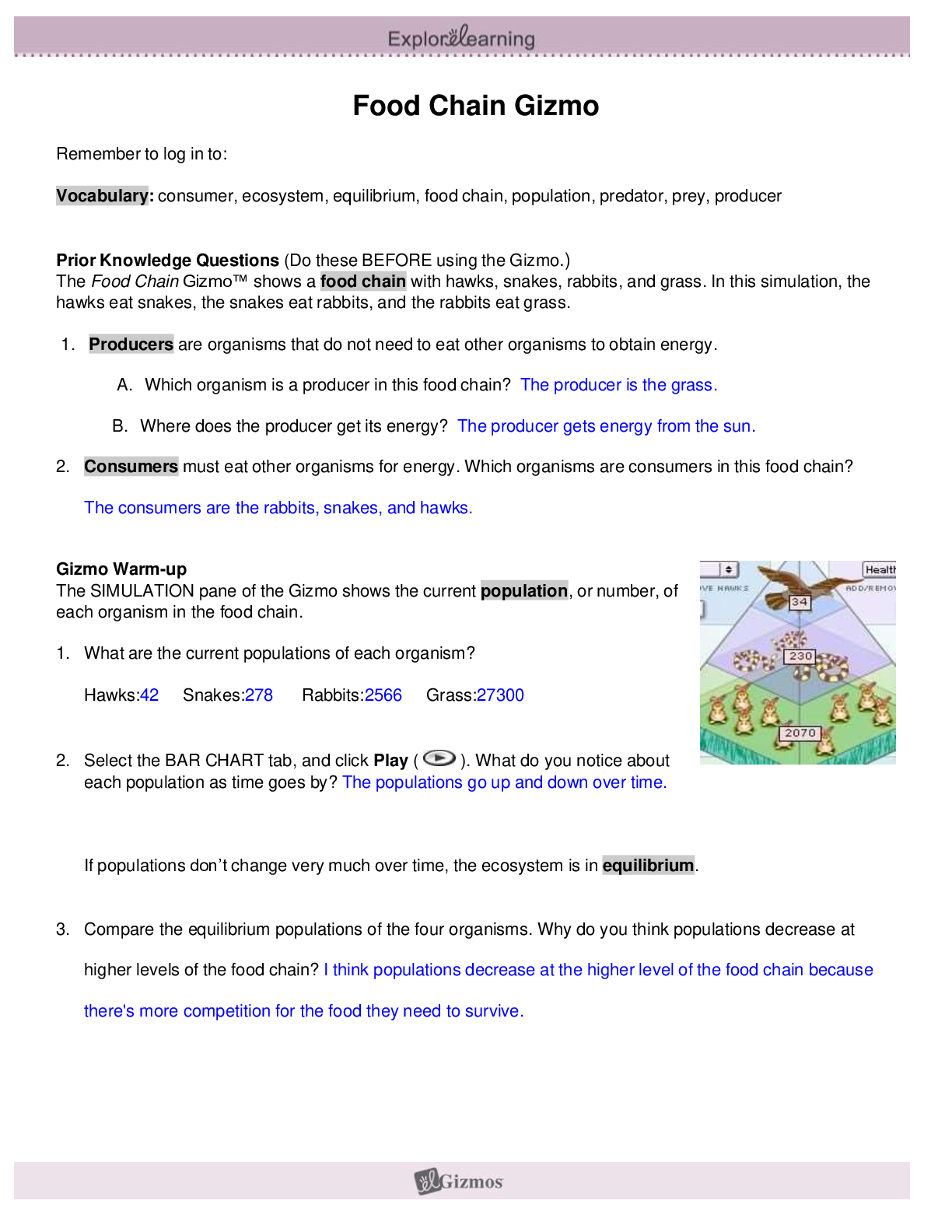
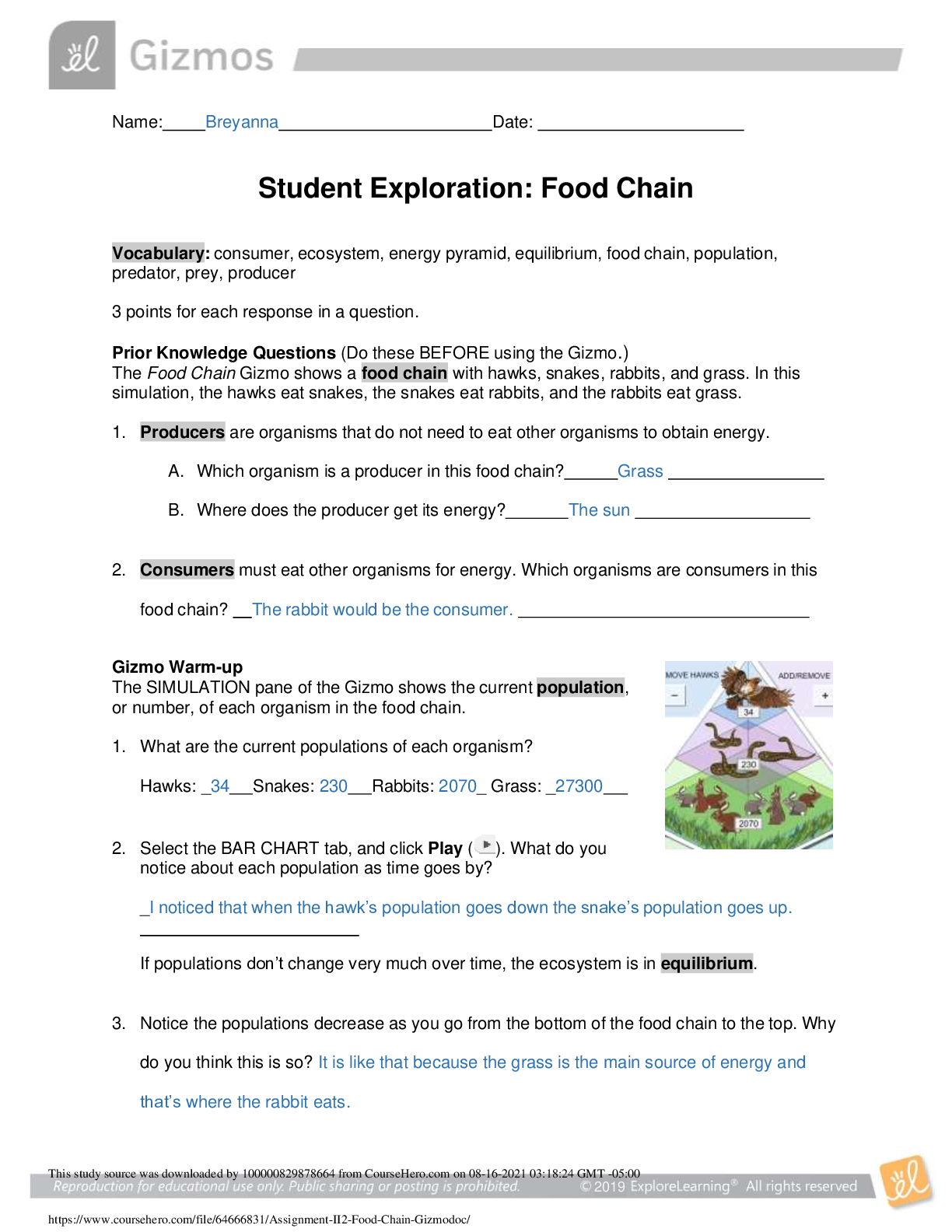
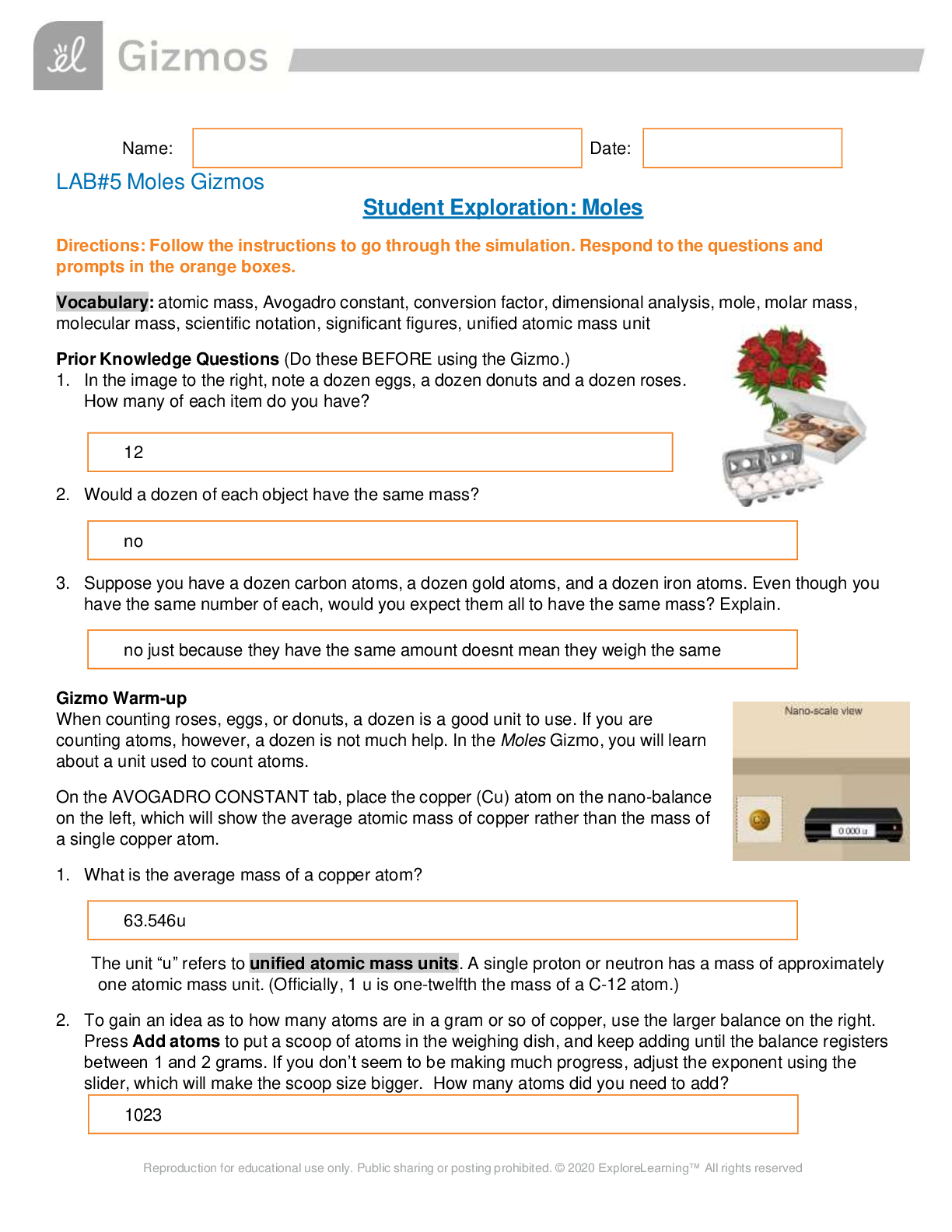


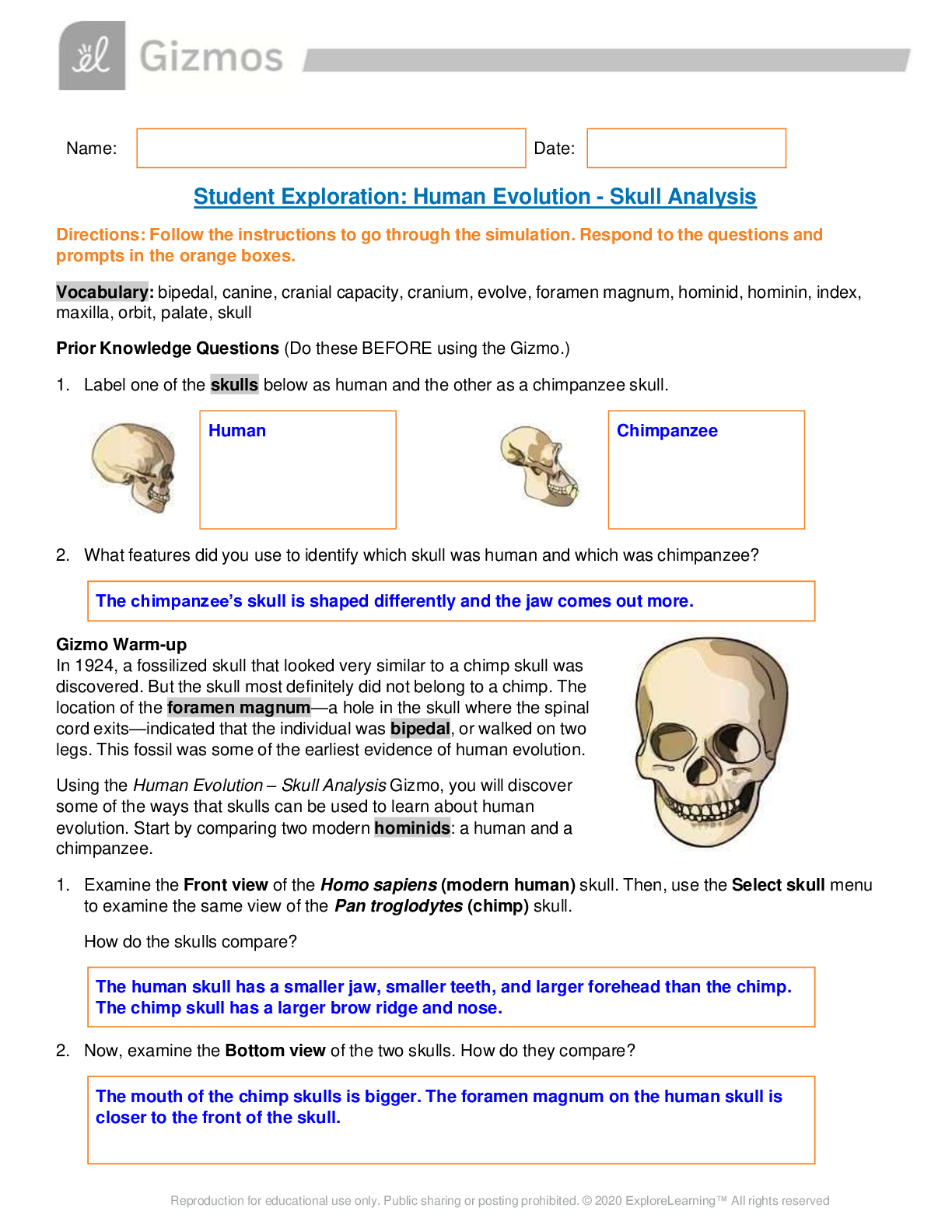
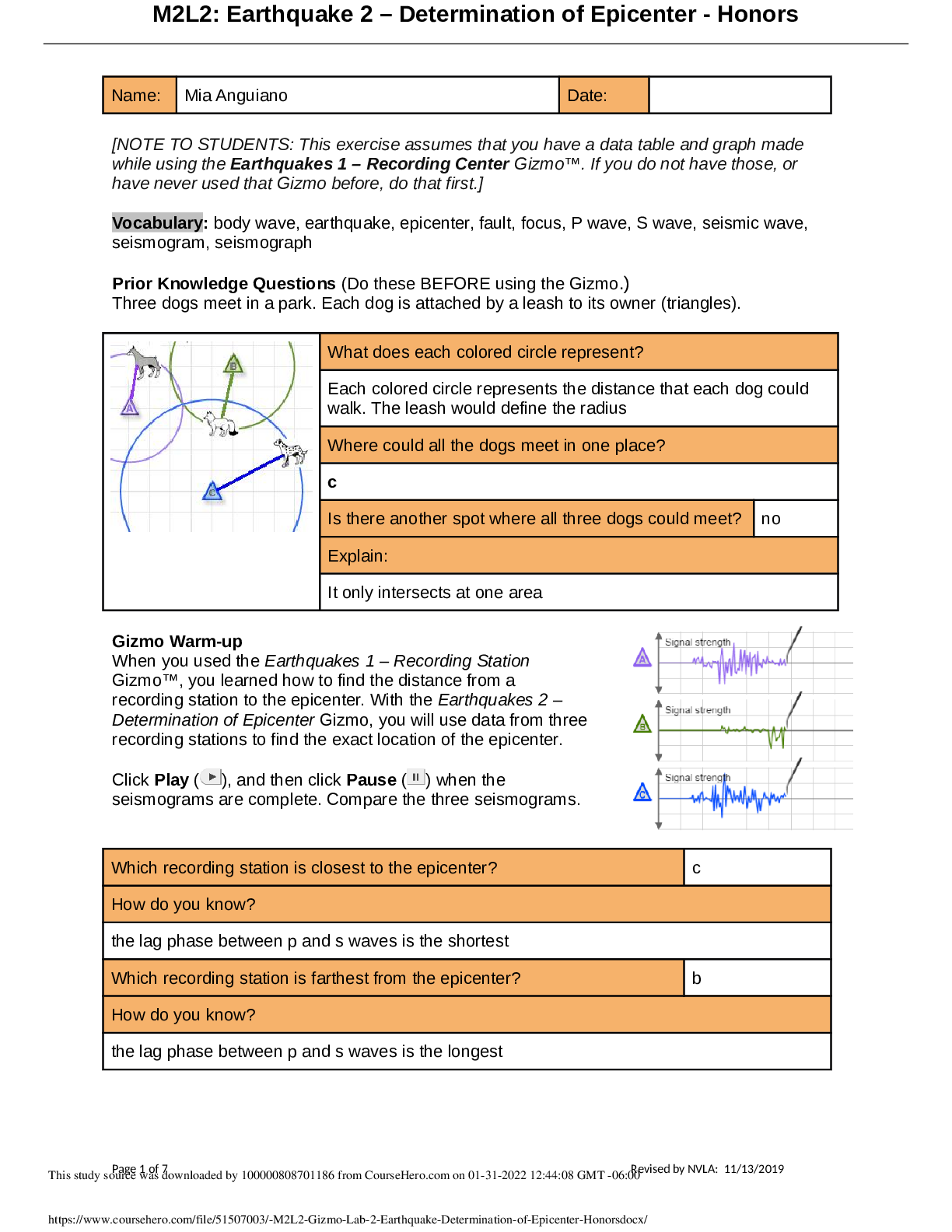
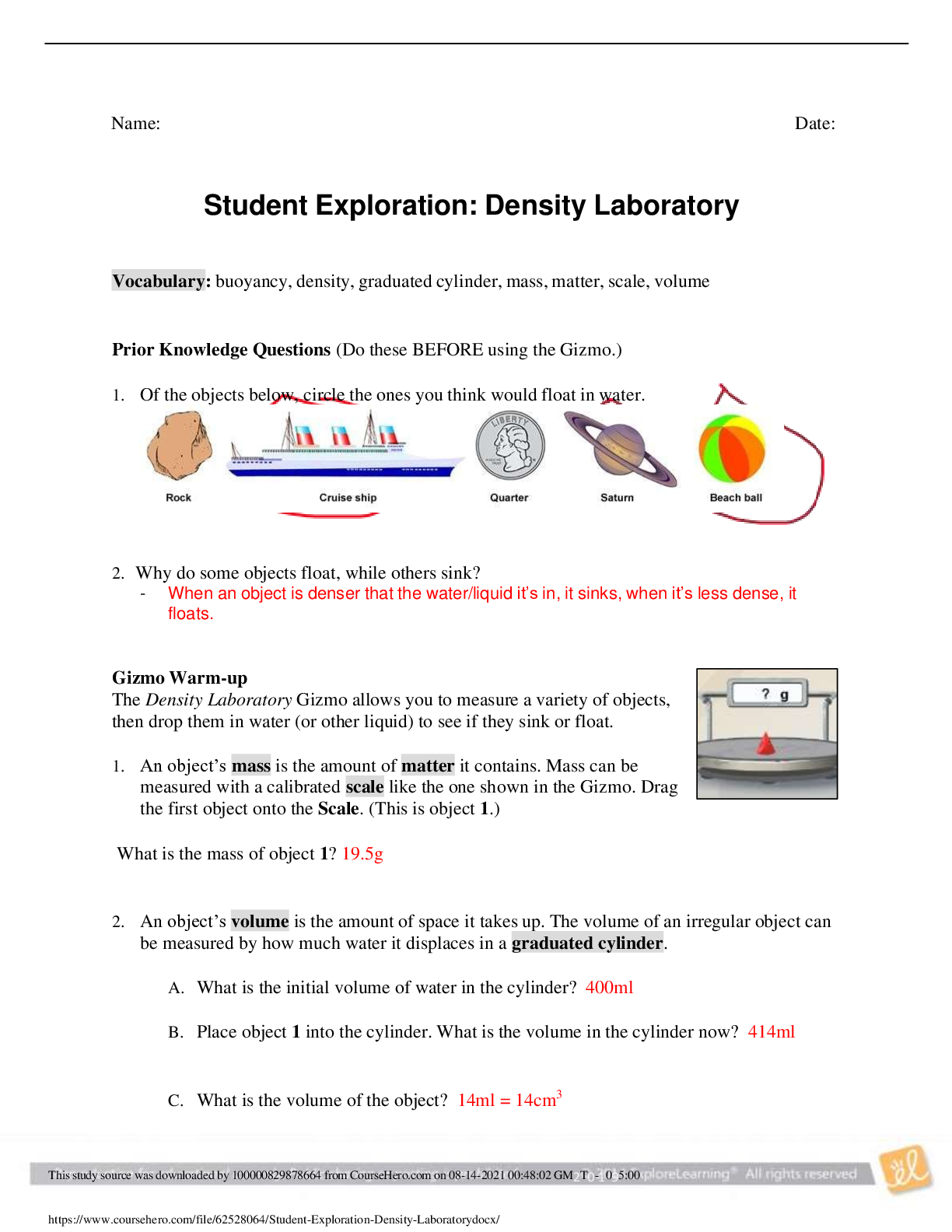
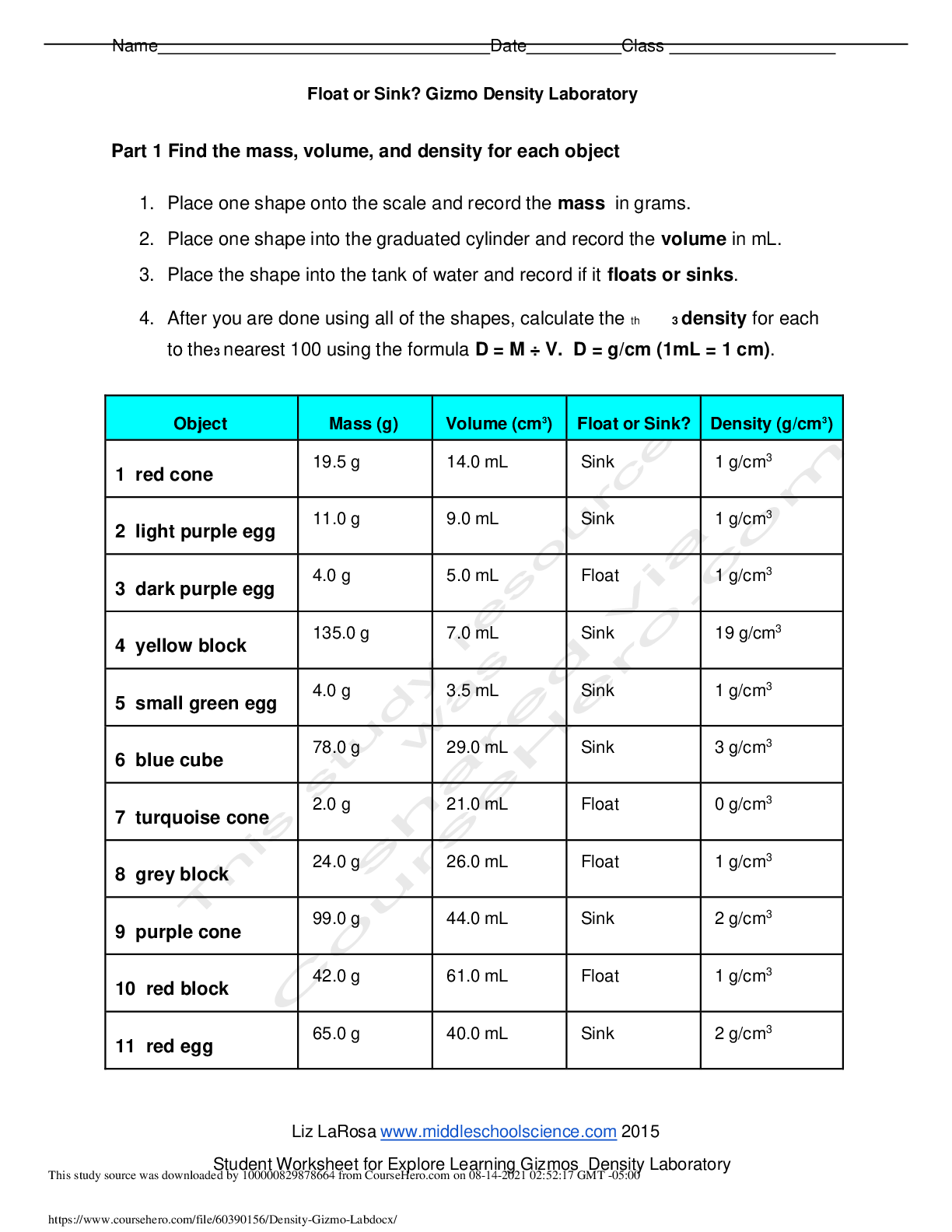
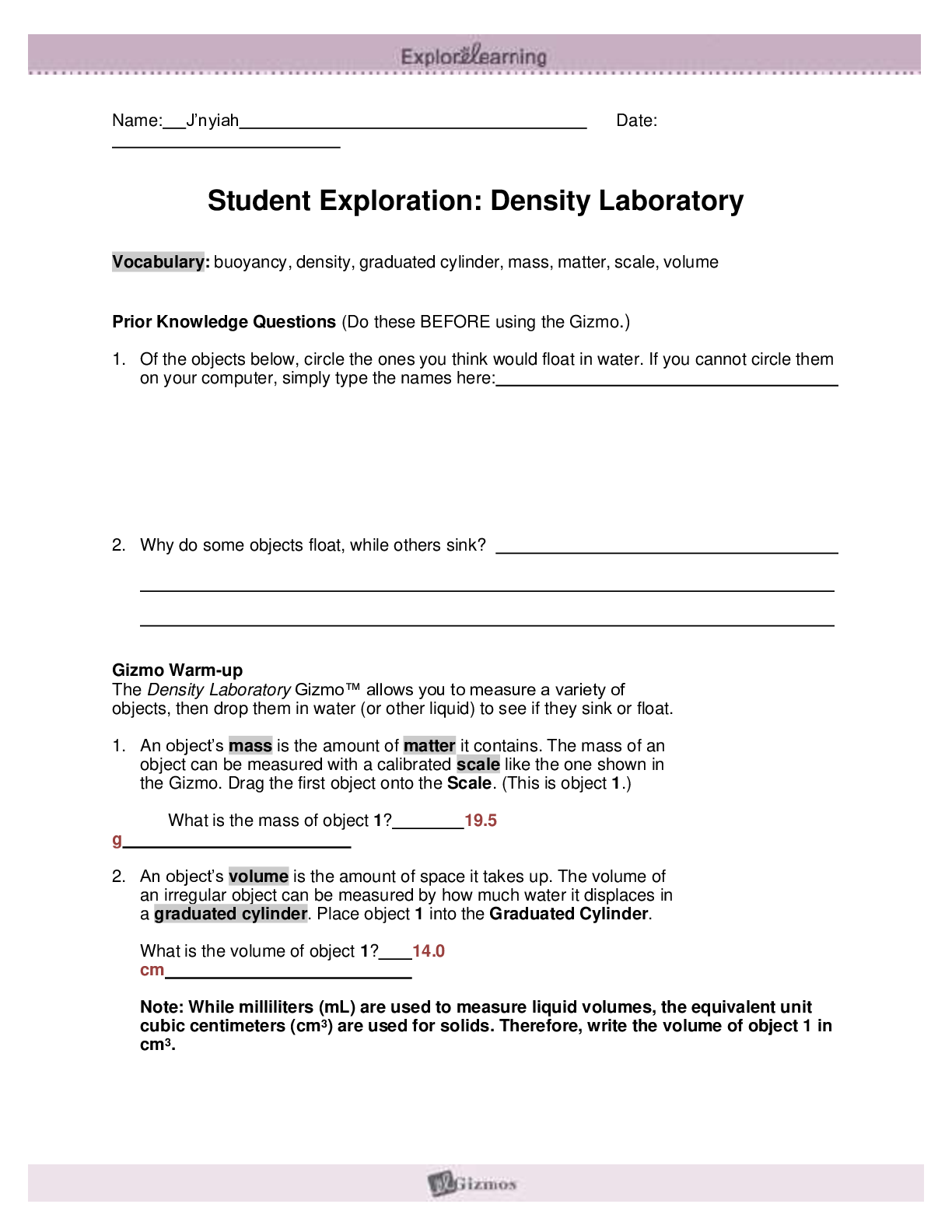
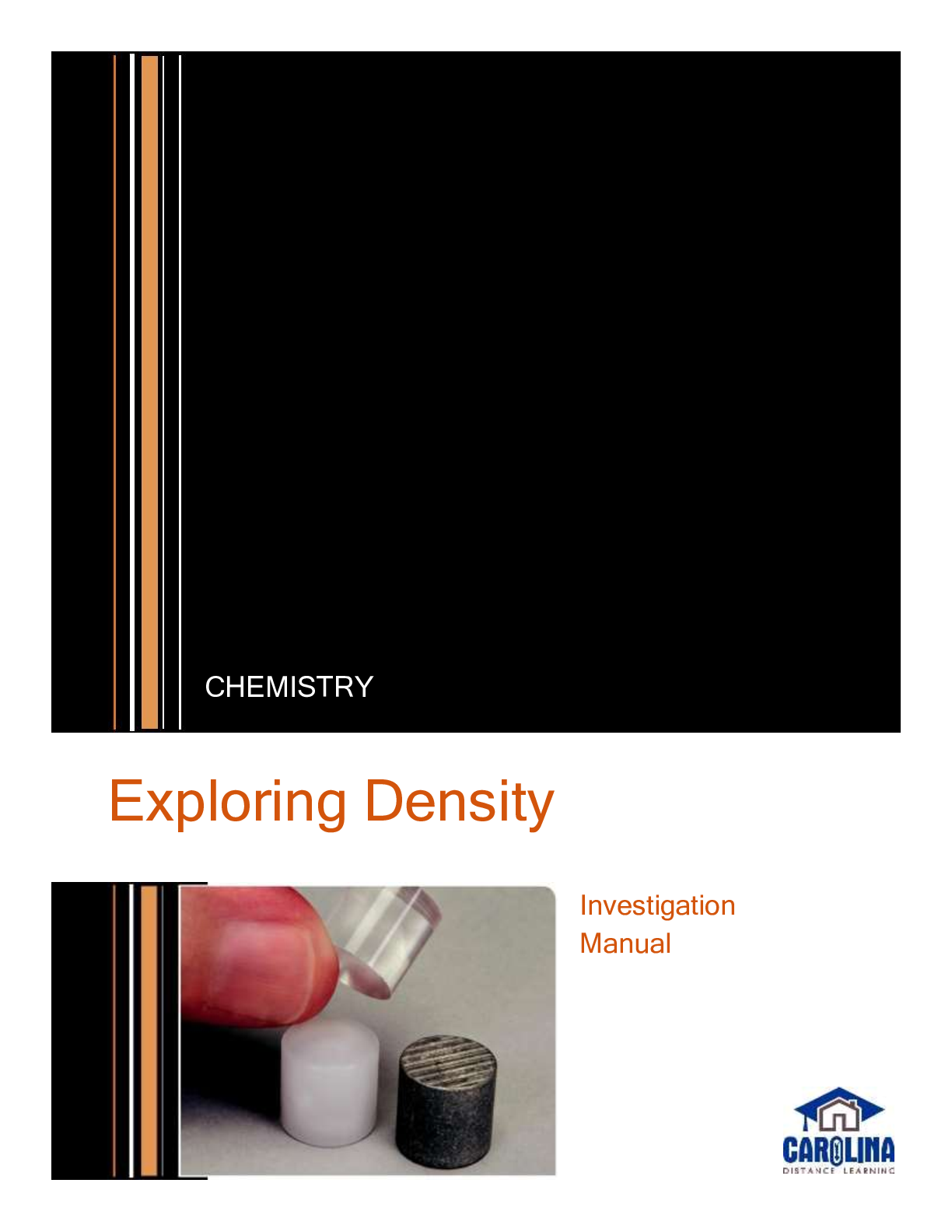


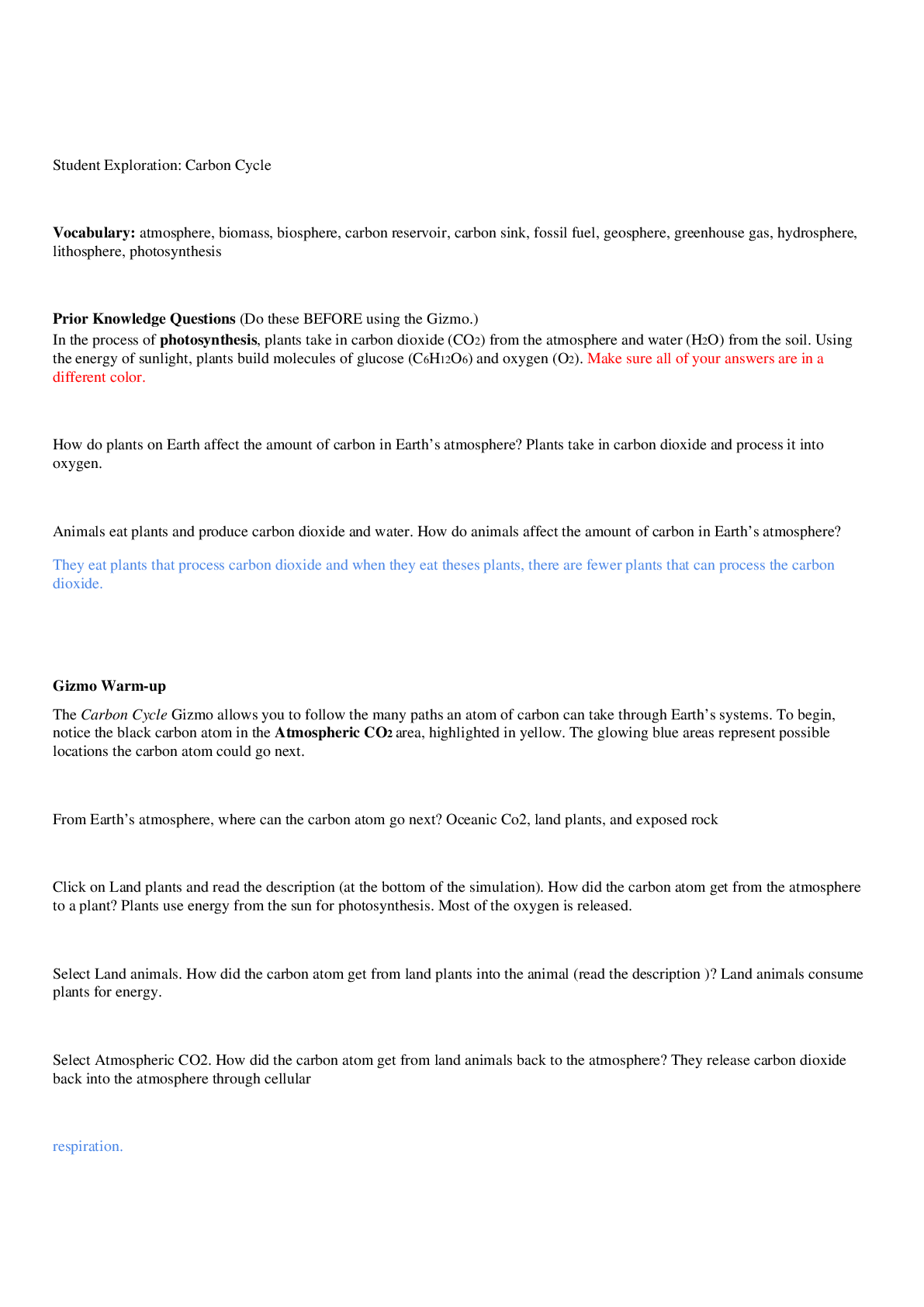
.png)
.png)
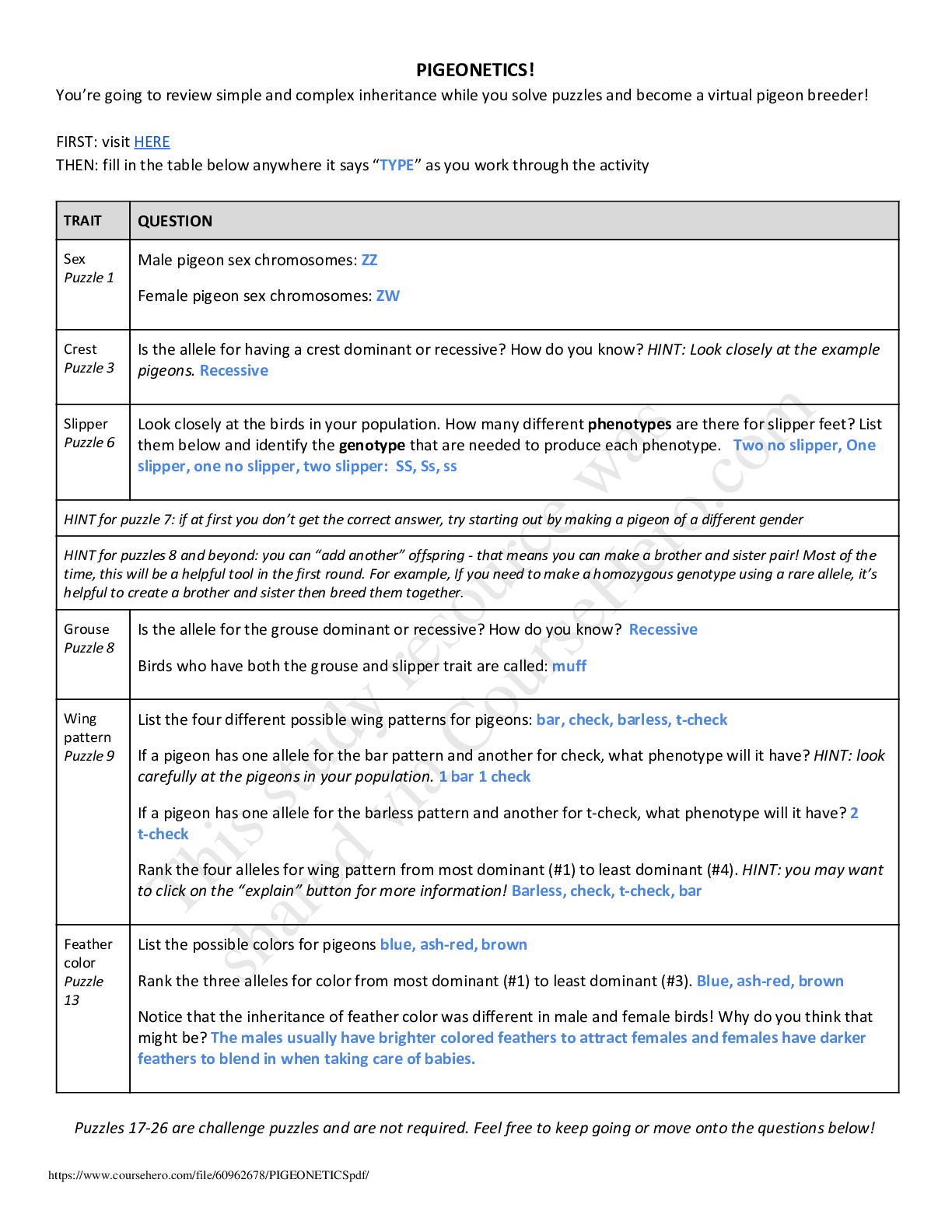


.png)




